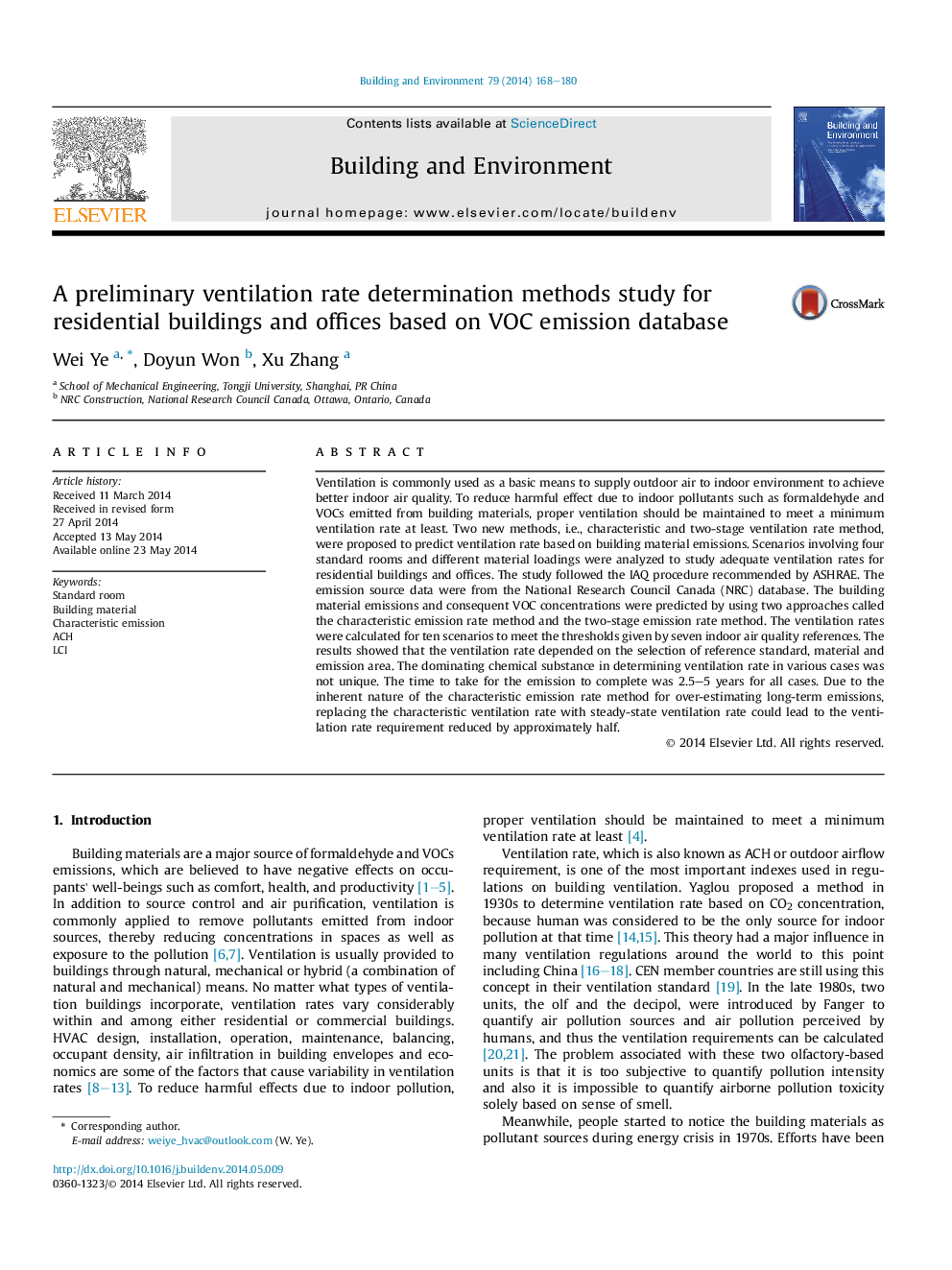| کد مقاله | کد نشریه | سال انتشار | مقاله انگلیسی | نسخه تمام متن |
|---|---|---|---|---|
| 248110 | 502546 | 2014 | 13 صفحه PDF | دانلود رایگان |

• Two methods were proposed to determine ventilation rates for residences and offices.
• The characteristic ventilation rate method could be over-estimating, but easy to apply.
• The two-stage ventilation rate method produced more achievable ventilation rate.
• Proved the concept of using building material emissions data to determine ventilation rate.
Ventilation is commonly used as a basic means to supply outdoor air to indoor environment to achieve better indoor air quality. To reduce harmful effect due to indoor pollutants such as formaldehyde and VOCs emitted from building materials, proper ventilation should be maintained to meet a minimum ventilation rate at least. Two new methods, i.e., characteristic and two-stage ventilation rate method, were proposed to predict ventilation rate based on building material emissions. Scenarios involving four standard rooms and different material loadings were analyzed to study adequate ventilation rates for residential buildings and offices. The study followed the IAQ procedure recommended by ASHRAE. The emission source data were from the National Research Council Canada (NRC) database. The building material emissions and consequent VOC concentrations were predicted by using two approaches called the characteristic emission rate method and the two-stage emission rate method. The ventilation rates were calculated for ten scenarios to meet the thresholds given by seven indoor air quality references. The results showed that the ventilation rate depended on the selection of reference standard, material and emission area. The dominating chemical substance in determining ventilation rate in various cases was not unique. The time to take for the emission to complete was 2.5–5 years for all cases. Due to the inherent nature of the characteristic emission rate method for over-estimating long-term emissions, replacing the characteristic ventilation rate with steady-state ventilation rate could lead to the ventilation rate requirement reduced by approximately half.
Journal: Building and Environment - Volume 79, September 2014, Pages 168–180